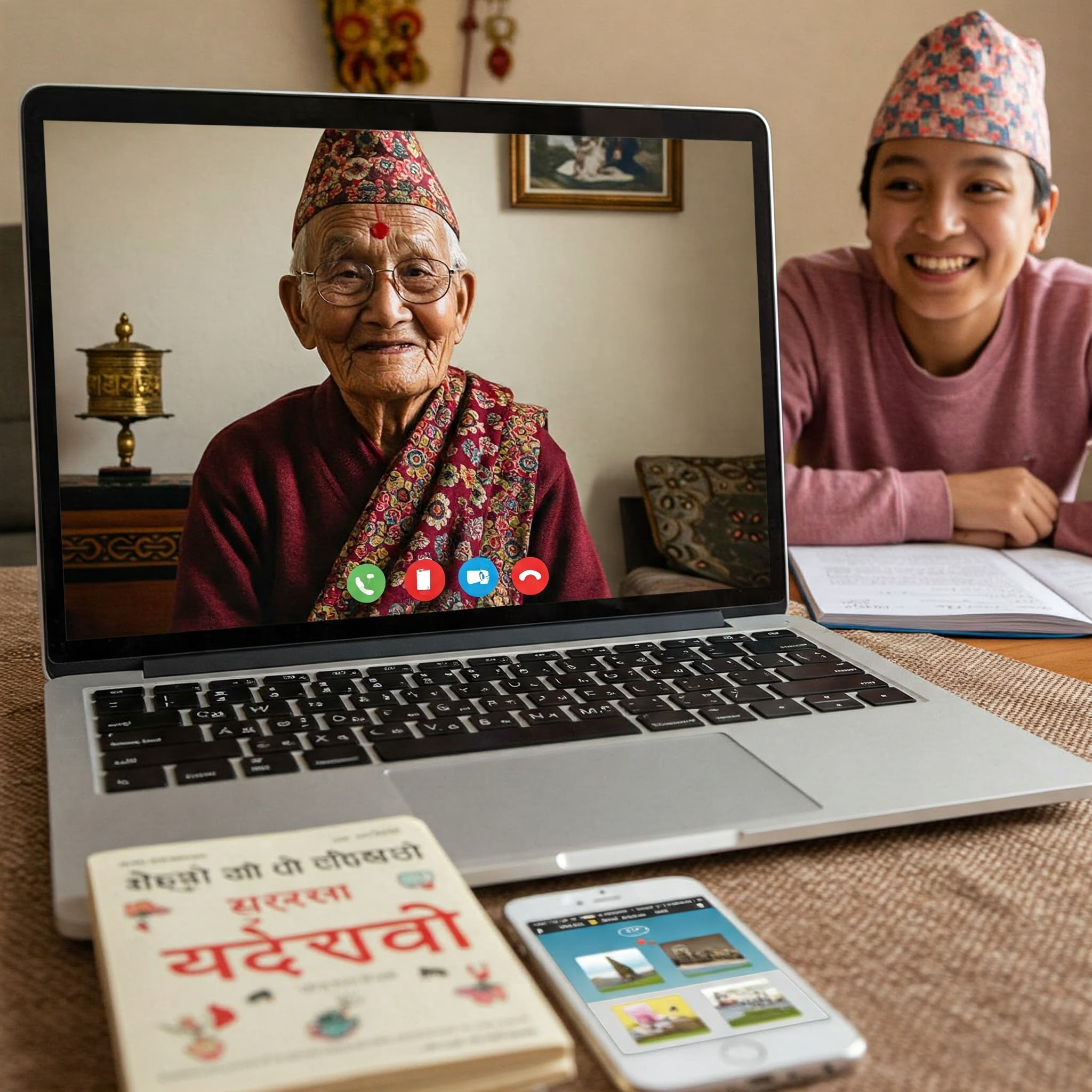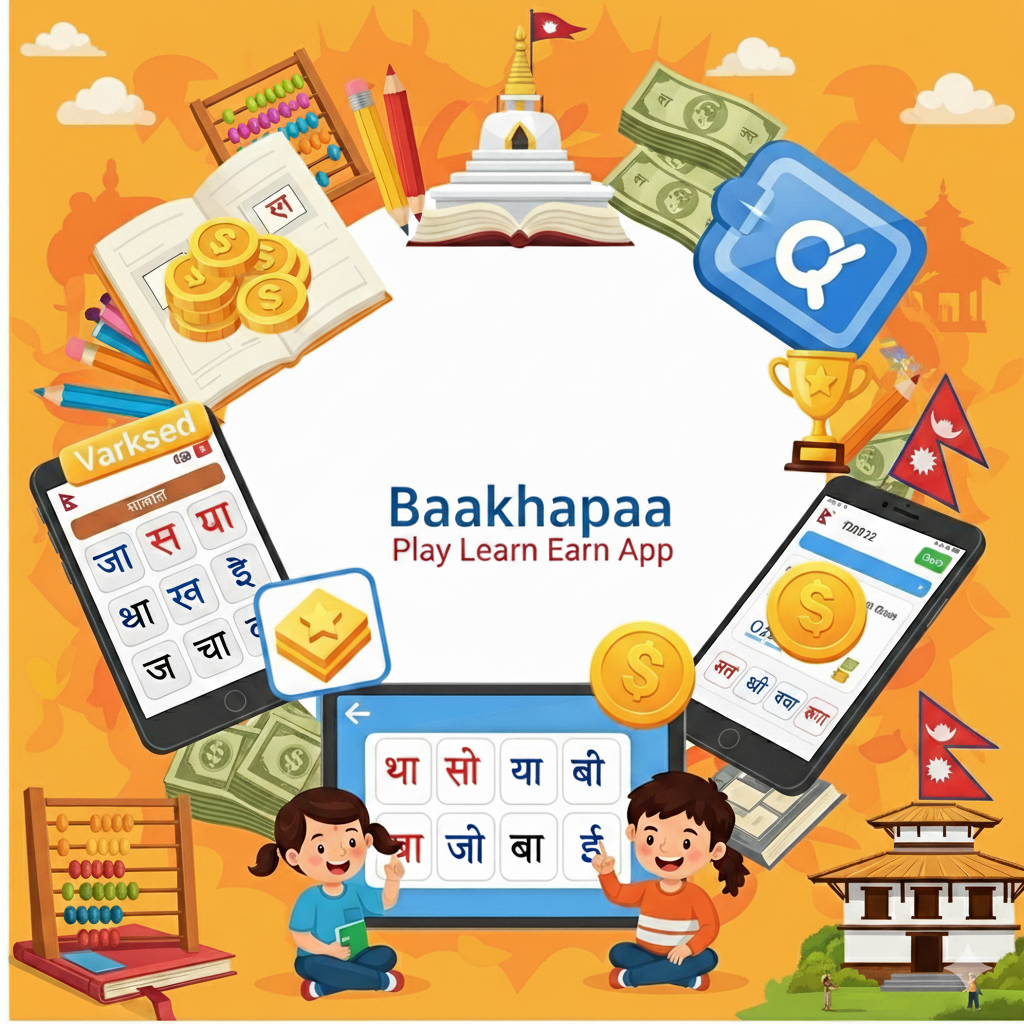Lost in Translation? Reconnecting with Your Mother Tongue (Nepali) from Afar
For many in the Nepali diaspora, particularly second or third generations living abroad, the connection to the mother tongue can feel like a fading echo. You might understand bits and pieces spoken by your parents or grandparents, or perhaps you yearn to speak Nepali with more confidence. That feeling of being "lost in translation" within your own heritage is common. But the good news is, it's never too late for mother tongue learning and reconnecting with heritage language. This guide offers practical tips and resources to help you learn Nepali online or improve your existing skills, strengthening your ties to your rich cultural heritage. While we'll focus on Nepali, these principles apply to learning Hindi or any other regional language from afar.
The "Why": Importance of Mother Tongue & Benefits of Multilingualism
Why embark on this linguistic journey? The importance of mother tongue extends far beyond mere communication:
- Cultural Connection & Identity: Language is the lifeblood of culture. It carries nuances, humor, history, and a unique worldview. Speaking Nepali connects you directly to your roots and strengthens your sense of identity.
- Family Bonds: It allows for deeper, more meaningful conversations with parents, grandparents, and relatives in Nepal, bridging generational and geographical gaps.
- Cognitive Benefits: Multilingualism is scientifically proven to enhance cognitive abilities, including problem-solving, multitasking, and even delaying age-related cognitive decline.
- Deeper Appreciation of Heritage: Understanding Nepali opens up a world of authentic Nepali music, movies, literature, and religious texts in their original form.
- Community and Belonging: It allows for fuller participation in Nepali language for diaspora community events and fosters a stronger sense of belonging.
Bridging the Gap: Practical Tips & Resources to Learn Nepali Online (or Improve)
Thanks to technology, learning Nepali from anywhere in the world is more accessible than ever:
Language Learning Apps:
- What they offer: Many apps use a gamified approach with interactive lessons, vocabulary builders, flashcards, and sometimes even speech recognition for pronunciation practice.
- Examples: Look for apps specifically designed for learning Nepali. Apps like Ling App, Simply Learn Nepali, and even Duolingo (if Nepali is available or becomes more robust on the platform) can be great starting points. Memrise is also good for vocabulary through spaced repetition.
- Tip: Consistency is key. Even 10-15 minutes a day can make a difference.
Online Courses & Tutors:
- What they offer: Structured lessons, grammar explanations, and personalized feedback. Platforms like italki or Preply connect you with Nepali tutors for one-on-one sessions.
- Websites & Platforms: Websites like Cudoo offer bundled Nepali language courses. YouTube channels like "Learn Nepali with Rabina" or "Nepali Classes by NepaliTime" provide video lessons.
- Tip: Find a course or tutor that matches your learning style and goals.
Language Exchange Partners:
- What they offer: The opportunity to practice speaking Nepali with a native speaker who, in turn, might want to practice English or another language you speak.
- Platforms: Websites like ConversationExchange, Tandem, or HelloTalk facilitate these connections.
- Tip: Be patient and find a partner you connect with. Focus on conversation, not just perfection.
Immersive Media – Making it Fun!
- Movies & TV Shows: Watch Nepali films or series with subtitles (English at first, then perhaps Nepali if available). This helps with listening comprehension and exposure to natural speech patterns. Platforms like YouTube host many Nepali movies and shows.
- Music: Listen to Nepali songs – from folk to modern pop. Look up the lyrics (and their translations) to expand vocabulary and cultural understanding.
- Books & Stories: Start with simple Nepali children's books or folk tales. As you progress, you can move to more complex literature.
Community Engagement (Online & Offline):
- Online Groups: Join Facebook groups or forums for Nepali language learners or diaspora communities.
- Local Events: If you live in an area with a Nepali population, look for Nepali community events abroad – festivals, cultural programs, or even informal language meetups.
For the Next Generation: How to Teach Kids Nepali Abroad
Passing on the language to children growing up outside Nepal requires a proactive and engaging approach:
- Make it Fun: Use games (like word puzzles), songs, rhymes, and storytelling.
- Speak Nepali at Home: Consistency is vital. Even if it’s mixed with English initially, make Nepali a living language within the household.
- Storytelling: Narrate Nepali folk tales or even make up stories in Nepali. This builds vocabulary and cultural connection.
- Connect with Elders: Encourage regular conversations (even video calls) with grandparents or relatives who speak Nepali fluently.
- Utilize Resources: Use age-appropriate Nepali learning apps, cartoons, or illustrated children's books.
- Cultural Immersion: Involve them in celebrating Nepali festivals and explaining the associated vocabulary and traditions.
Overcoming Challenges & Staying Motivated
Learning any language, especially your heritage language from afar, can have challenges:
- Lack of Daily Practice: Create opportunities – talk to yourself in Nepali, label items in your house, find a language partner.
- Feeling Self-Conscious: Remember, the goal is communication, not perfection. Native speakers are usually very encouraging.
- Time Constraints: Even short, consistent study sessions are more effective than infrequent long ones.
- Motivation Dips: Remind yourself of your "why." Watch an inspiring Nepali movie, listen to your favorite Nepali song, or plan a future trip to Nepal!
Test Your Basics & Immerse Yourself (RakeshRajbhat.com & Baakhapaa Angle)
Curious about how much you already know or want a fun way to reinforce your learning?
- Kickstart Your Journey: Websites focused on Nepali culture and community, perhaps like a conceptual RakeshRajbhat.com, could offer a simple quiz with basic Nepali phrases to test your knowledge and encourage you to learn more.
- Immerse Through Stories: For a truly engaging way to connect with the language, look to platforms that champion storytelling. The Baakhapaa app, with its vision as an all-in-one storytelling platform (Play, Learn, and Earn), can be an incredible resource. Engaging with Nepali stories presented in video format, or perhaps even interactive content, provides natural language immersion. The "Learn" aspect of Baakhapaa perfectly aligns with this journey of reconnecting with heritage language, potentially even rewarding users for their engagement with Nepali content.
It's Never Too Late to Reconnect
Reclaiming or improving your mother tongue is a deeply rewarding journey. It's a path to reconnecting with heritage language, strengthening family bonds, and enriching your personal identity. While there might be challenges, the wealth of resources for learning Nepali (and other Indian languages) available today means that distance is no longer an insurmountable barrier. Embrace the process, celebrate small victories, and enjoy the beautiful journey of bringing your mother tongue learning to life.
Please login to leave a comment.


 Rakesh Rajbhat
Rakesh Rajbhat




